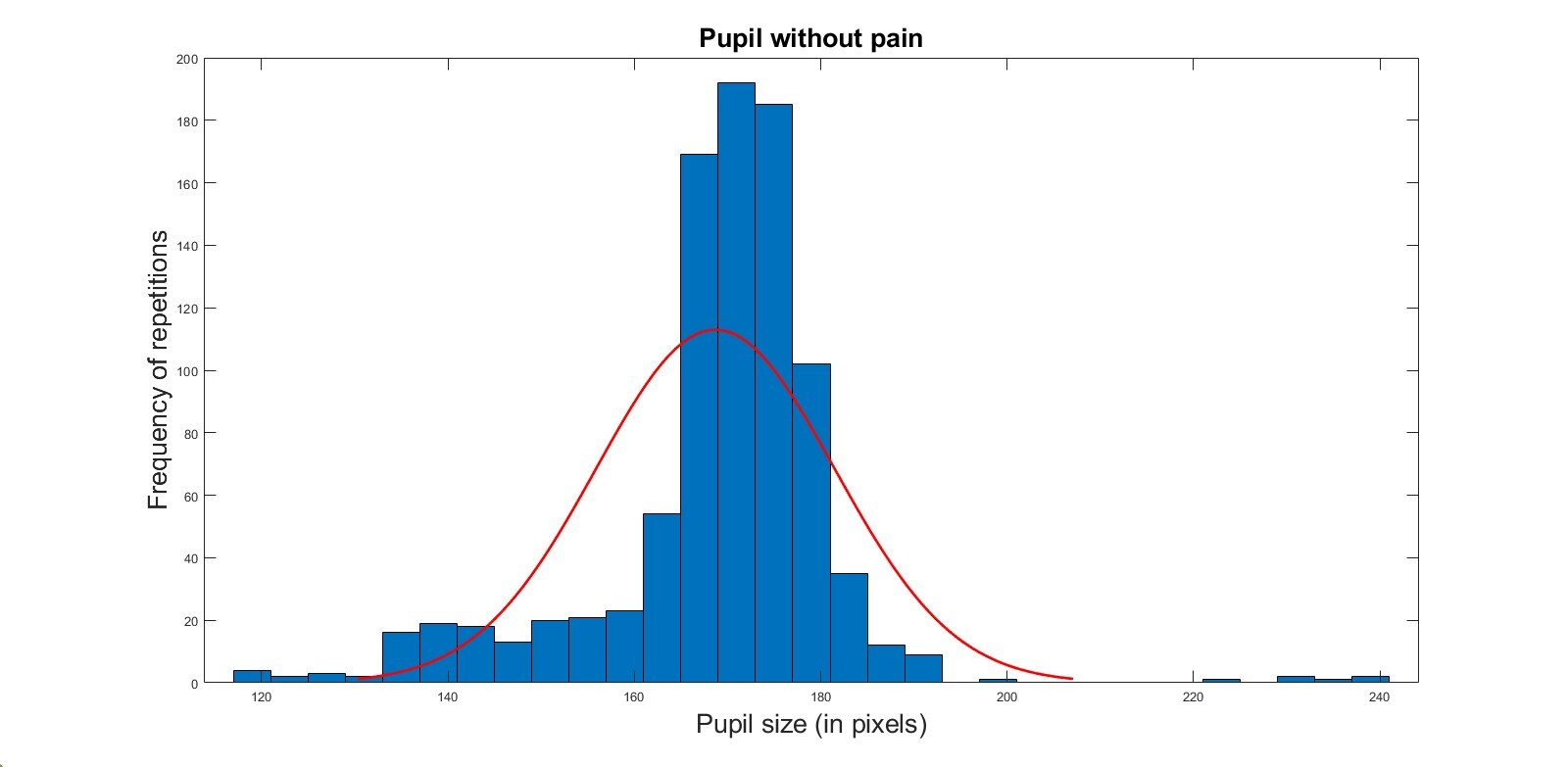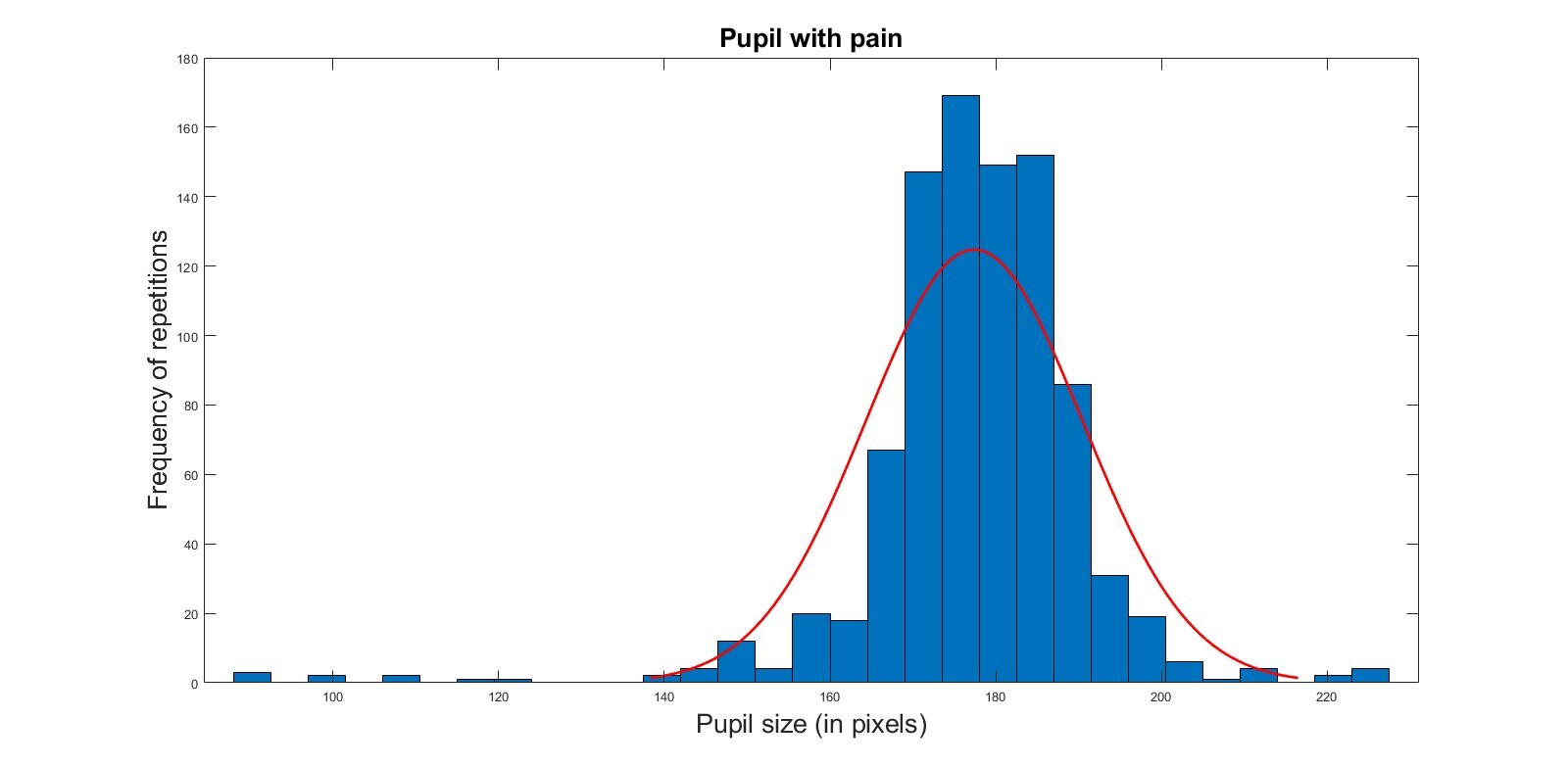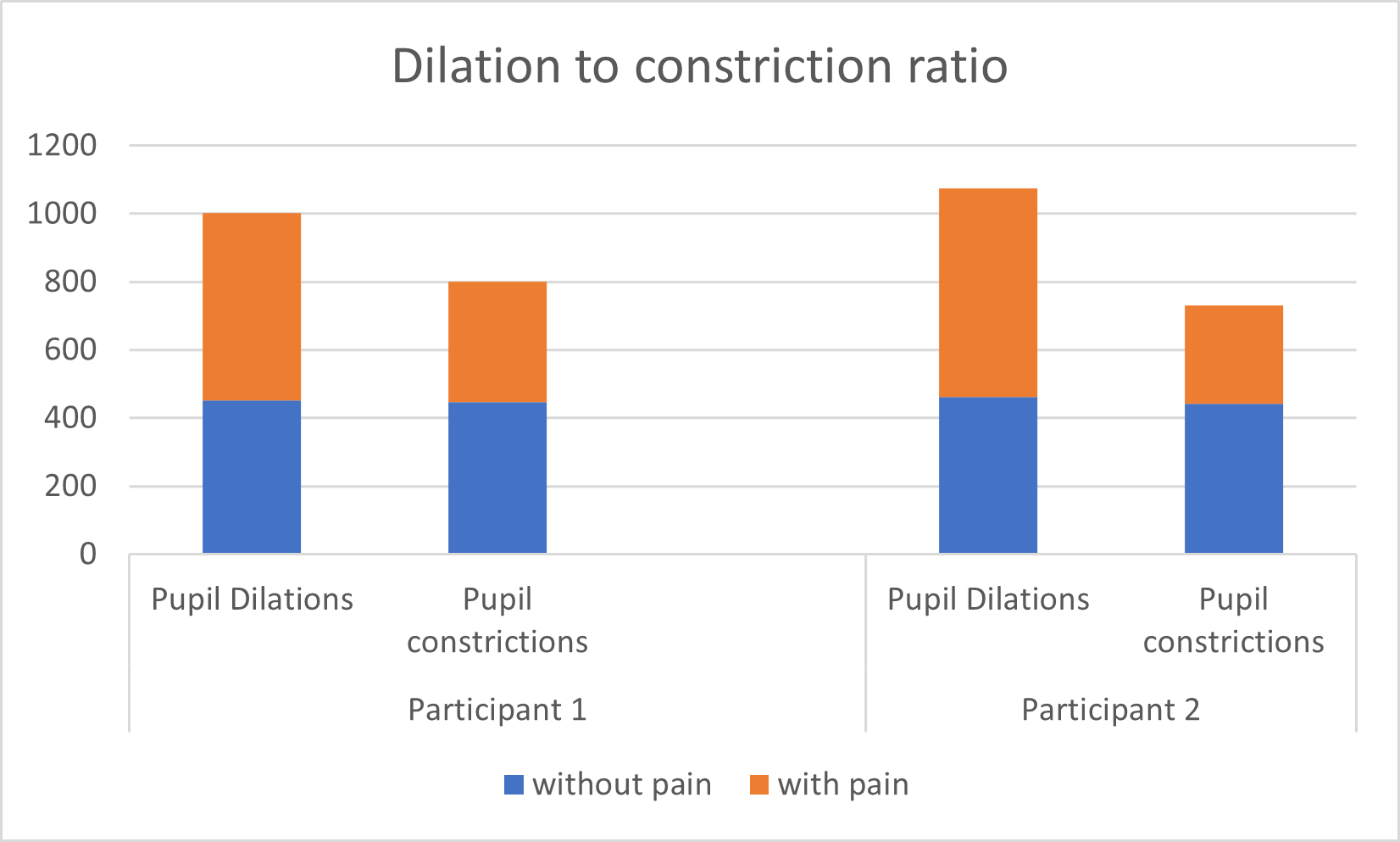OUTCOME
For the purpose of the project, we used Tabasco (a hot sauce) as a proxy for Neuropathic Pain (hereinafter pain). Using the procedure mentioned here, we recorded 5 participants for 30 seconds without pain and 30 seconds with pain.
Here is a histogram obtained from participant 1 without pain:

On the X-axis we have the radius of the pupil in pixels and on the Y-axis we have the number of instances (repetitions) the pupil stayed at that size. With a mean of 168.68, the number of pupil dilations and pupil constrictions are nearly equal.
Fig. 2. Shows the histogram of the same participant 1 with pain from tabasco.

With the mean as 177.40, the pupil dilations above the average size have been increased by 22.4%.

Fig. 3. is the bar chart comparing pupil behavior of participant 1 and participant 2 with and without pain. Orange color indicates the condition of the participant under pain and blue color indicates the condition of the participant without pain. It is clearly noticeable that in the total number of pupil dilations above the normal size, the orange bar (with pain) is higher than the blue bar (without pain). And in the total number of pupil constrictions, the orange bar and the blue bar are almost similar. The same behavior is observed in both participant 1 and participant 2.
Thus, in conclusion, Neuropathic pain in humans causes pupil to dilate 27.75±5% more than usual pupil size.
Future Scope
This experiment however is with one type of pain. Similar behavior may happen with other types of pain with different percentage increase in pupil size. We hope this project stands as a baseline for future experiments with different pains. Upon successful experimentation with different pains, we believe the results as a whole will be very useful in categorizing pain and treating it wisely.